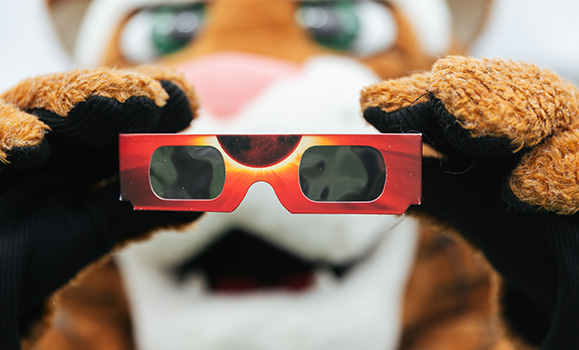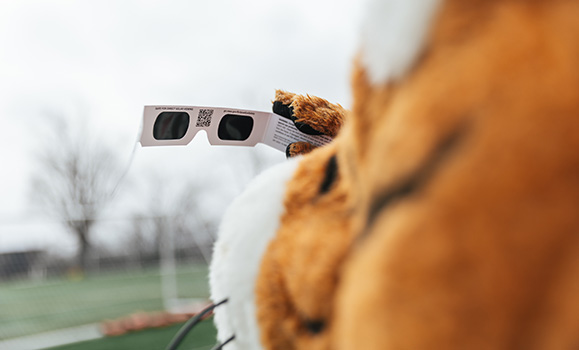Amateur and professional astronomers alike will be watching the skies on Monday, April 8 when a rare total solar eclipse passes over parts of Canada, the United States, and Mexico for the first time since August 2017.
If you miss out on the spectacle, it will be a much longer wait until you can experience it again — the next total solar eclipse visible in North America won’t occur until August 2044.
We spoke to Dr. Manuel Helbig, an assistant professor in the Department of Physics and Atmospheric Science, about what causes an eclipse, how to safely view it, and his research stemming from the eclipse.
What causes a total solar eclipse to occur and why are they so rare?
A total solar eclipse occurs when the moon passes in between the Earth and sun, obscuring 100 per cent of the sun. This event causes light from the sun to diminish over a period of an hour or so before the sun is completely covered by the moon, and we experience nighttime-like conditions during the middle of the day.
Such events are rare, since they require the position of the moon and sun to align, which only happens every few years. And when it happens, it is seen in a very limited geographic region, which we call the path of totality.

What exactly is the path of totality? And why is Halifax only experiencing a partial eclipse?
The path of totality is the geographic region where the moon will completely block the sun. Locations experiencing a partial eclipse will see the sun being covered by the moon to various extents. In Halifax, we will experience about 95 per cent coverage, so five per cent of the sun will still be visible. To experience a total solar eclipse, we need to drive to New Brunswick, where the path of totality stretches roughly 200 km from Moncton to Bathurst.
Where is the best place in Canada to view the eclipse?
First, to view the total solar eclipse, the viewer must be within the path of totality, which stretches in Canada from Lake Erie to central Newfoundland. The second factor is less certain. Clear skies or partly cloudy conditions provide the best solar eclipse experience.

Are there any safety concerns people should be aware of?
The number one rule is to never directly look toward the sun without proper eye protection (i.e. eclipse glasses). Guidance on protective measures can be found on the . It is also recommended to keep pets indoors since they might be disturbed by the unusual light conditions and are at risk of looking directly into the sun. Drivers might be distracted during the event, so special care should be taken while on the road.
Looking for more safety tips?ÌýDal's Environmental Health & Safety Office offers some viewing guidelines

Why do you think people are fascinated by celestial events like eclipses?
The sun plays a crucial role in our lives and is the dominant energy source for life on Earth. Solar eclipses turn daytime into nighttime for a few minutes, an experiment that is solely caused by the movements of the sun, moon, and Earth. For many of us, this will remain a once-in-a-lifetime event. Experiencing such an event is a privilege that is given to us by the universe and there is no human activity that can recreate this experience. This is the reason why solar eclipses had important mythical meaning for many ancient societies around the world.

What are your plans for April 8?
I will be in Fredericton, New Brunswick, with my research group. At a nearby forest, we conduct long-term observations of ecosystem CO2 uptake and of water cycle processes. The research site is part of the . For the solar eclipse, several research groups that manage sites along the path of totality from Mexico to New Brunswick have come together to collect observations of solar radiation, energy fluxes, CO2 exchange rates, and air temperature and humidity during the event. We want to use this astronomical experiment to better understand how blocking of sunlight affects ecosystem processes. Our group in particular is interested in how the solar eclipse will affect clouds, which play an important role in the global climate system, so we are hoping for a partly cloudy day on April 8. These observations may also be useful to better understand the impacts of solar geoengineering (i.e. artificial blocking of sunlight as a climate mitigation measure) on ecosystems and atmosphere.

Looking directly at the sun during a solar eclipse can damage your retinas.Ìý

